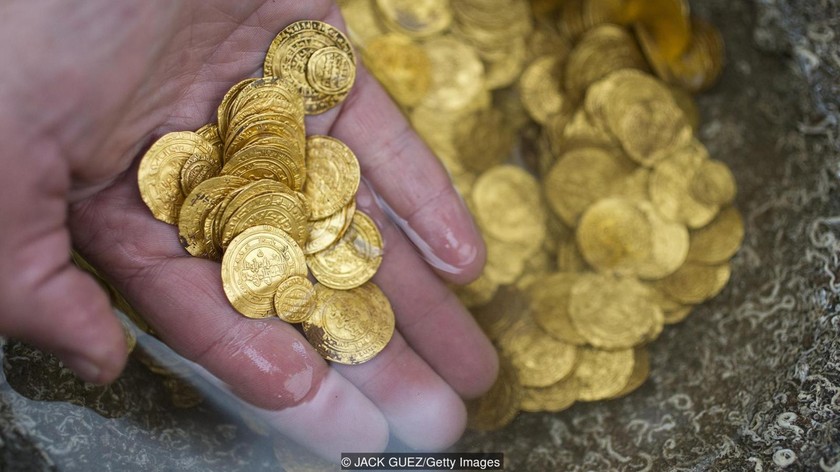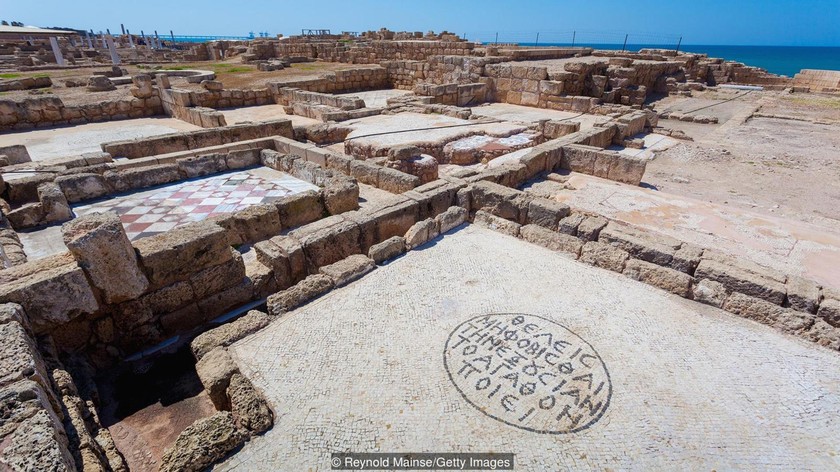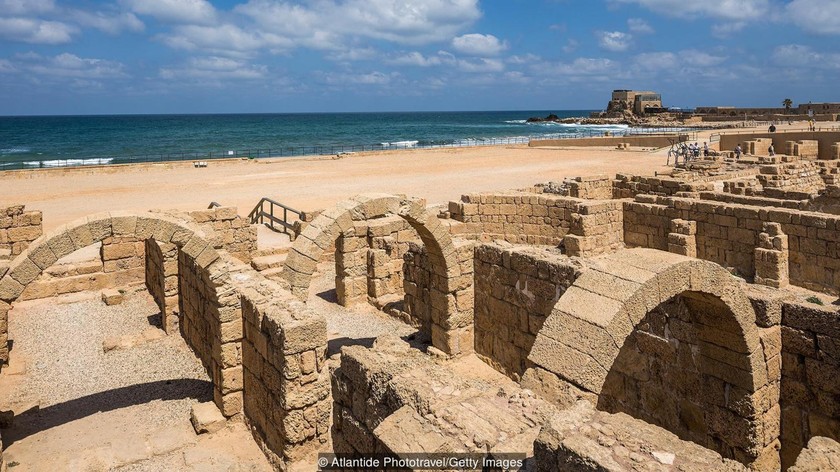In February 2015, a scuba diver named Zvika Fayer and his friends stumbled upon a remarkable discovery while diving in the waters near Caesarea, Israel. During their dive, they noticed a shining glimmer of gold coins buried beneath the sand. This find was due to a previous winter storm that had altered the topography of the seabed. Zvika and his friends initially believed the coins to be fake, but after closer inspection, they were confirmed to be authentic gold coins. Zvika was astonished by this discovery. Israel boasts a plethora of underwater archaeological sites, including Caesarea, which has become a favorite diving spot among amateur divers. The government is also open to allowing amateur divers to explore these sites and learn about the undersea ruins. Zvika had dived at Caesarea dozens of times before and enjoyed spotting big fish, antique goods, and pottery on the ocean floor. However, the discovery of this treasure is undoubtedly one of the largest ever found on the coast of Israel.

A discovery of more than 2,000 gold coins in the Mediterranean Sea has been hailed as a priceless find by archaeologists in Israel. Unlike most treasure hunters who would have kept such a discovery, Zvika Fayer contacted the Archaeological Agency for Israel after finding the coins and worked with them to conduct further surveys of the area. The gold coins, which were found to be 24 karat with up to 95% purity, had been preserved in excellent condition on the seabed for about 1,000 years, making them a valuable source of historical information. Although the divers who found the treasure don’t enjoy any material value from their discovery, it has become national property of the state and is considered to be of great significance both physically and mentally. An expert on antiquity with the Israel Archaeology Authority confirmed that the coins are believed to have been sunk by shipwrecks near Caesarea, an ancient Roman port in the Eastern Mediterranean. Despite being on the seabed for more than a millennium, the coins are completely clean and very new.

The ancient Roman ruins in Caesarea, located on the Mediterranean coast between Tel Aviv and Haifa, are in poor condition today. However, it used to be a bustling trading center during the ancient Roman period. Recently discovered gold coins from the time of Muslim rule provide valuable information about the history of Caesarea. The coins were made during the reigns of Caliphs al-Hakim and his son al-Zahir, indicating that Caesarea was part of the Fatimid dynasty of Islam. These coins were minted in various cities, showing that the currency of that time circulated through a unified regime. The discovery of these coins suggests that Caesarea was a prosperous city in the late 11th century. It is suspected that the treasure of 2,000 gold coins was lost due to a shipwreck accident or other unfortunate circumstances. Since the discovery, further exploration for treasures has been conducted collaboratively by Fayer and his colleagues with the IAA. They have explored other areas along the Mediterranean coast, including the coastal city of Netanya, which was a route used extensively for trade and commerce during ancient times.

The ruins of ancient Rome in Caesarea are in a state of disrepair. The city was established in the 4th century BC as a bustling trading post, and it was ruled by Cleopatra in 96 BC. However, the Romans conquered the region, and it was soon given to Herod the Great, who rebuilt the city as a port and renamed it after Roman Emperor Caesar Augustus. Under Herod’s rule, the city flourished, with the construction of walls forming a huge seaport and aqueducts to serve over 100,000 inhabitants. The city also boasted a horse racing arena, a large square, temples, markets, public saunas, and a domed theater that accommodated up to 20,000 spectators. In 6 AD, Caesarea became the capital of Rome in Judea and housed many famous Roman governors, including Pontius Pilate, who ruled during the time of Jesus. Despite the destruction of Jerusalem during the Jewish rebellion between AD 66-70, Caesarea continued to be the political and economic center of the region.